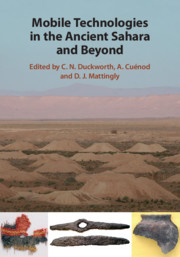Refine search
Actions for selected content:
13 results
THE MALE WEAVER IN PLATO’S STATESMAN
-
- Journal:
- The Classical Quarterly / Volume 74 / Issue 2 / December 2024
- Published online by Cambridge University Press:
- 08 April 2025, pp. 780-784
- Print publication:
- December 2024
-
- Article
-
- You have access
- Open access
- HTML
- Export citation
4 - Creating Value
-
- Book:
- A Concise History of the Aztecs
- Published online:
- 08 February 2024
- Print publication:
- 15 February 2024, pp 121-157
-
- Chapter
- Export citation
3 - Artefaction
- from Part I - The Making Sense
-
- Book:
- The Making Sense of Politics, Media, and Law
- Published online:
- 06 April 2023
- Print publication:
- 13 April 2023, pp 43-60
-
- Chapter
-
- You have access
- Open access
- HTML
- Export citation
CHANGING THE SAIL: PROPERTIUS 3.21, CATULLUS 64 AND OVID, HEROIDES 5
-
- Journal:
- The Classical Quarterly / Volume 72 / Issue 1 / May 2022
- Published online by Cambridge University Press:
- 27 September 2022, pp. 247-254
- Print publication:
- May 2022
-
- Article
- Export citation
An Inka Unku from Caleta Vitor Bay, Northern Chile
-
- Journal:
- Latin American Antiquity / Volume 32 / Issue 1 / March 2021
- Published online by Cambridge University Press:
- 23 March 2021, pp. 201-208
- Print publication:
- March 2021
-
- Article
- Export citation

Mobile Technologies in the Ancient Sahara and Beyond
-
- Published online:
- 18 September 2020
- Print publication:
- 03 September 2020
6 - The Early History of Weaving in West Africa
- from Part II - Technological Mobility and Transfers
-
-
- Book:
- Mobile Technologies in the Ancient Sahara and Beyond
- Published online:
- 18 September 2020
- Print publication:
- 03 September 2020, pp 183-208
-
- Chapter
- Export citation
The Han Imaginaire of Writing as Weaving: Intertextuality and the Huainanzi's Self-Fashioning as an Embodiment of the Way
-
- Journal:
- The Journal of Asian Studies / Volume 79 / Issue 2 / May 2020
- Published online by Cambridge University Press:
- 16 June 2020, pp. 367-402
- Print publication:
- May 2020
-
- Article
- Export citation
59 - Tapestries
- from Part VI - Visual Arts
-
-
- Book:
- The Cambridge Guide to the Worlds of Shakespeare
- Published online:
- 17 August 2019
- Print publication:
- 21 January 2016, pp 456-461
-
- Chapter
- Export citation
Part VI - Visual Arts
-
-
- Book:
- The Cambridge Guide to the Worlds of Shakespeare
- Published online:
- 17 August 2019
- Print publication:
- 21 January 2016, pp 375-482
-
- Chapter
- Export citation
PERFECT COLOURINGS OF ISONEMAL FABRICS BY THICK STRIPING
- Part of
-
- Journal:
- Bulletin of the Australian Mathematical Society / Volume 85 / Issue 2 / April 2012
- Published online by Cambridge University Press:
- 12 December 2011, pp. 325-349
- Print publication:
- April 2012
-
- Article
-
- You have access
- Export citation
PERFECT COLOURINGS OF ISONEMAL FABRICS BY THIN STRIPING
- Part of
-
- Journal:
- Bulletin of the Australian Mathematical Society / Volume 83 / Issue 1 / February 2011
- Published online by Cambridge University Press:
- 17 September 2010, pp. 63-86
- Print publication:
- February 2011
-
- Article
-
- You have access
- Export citation
